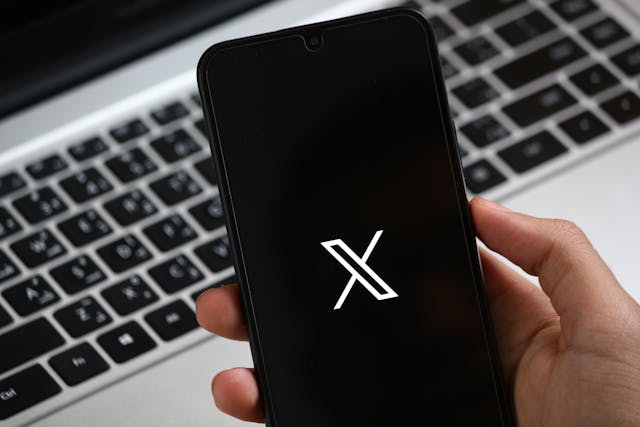
The creator economy has matured. So should your pricing.
In 2019, creators were happy to accept a flat fee for a shoutout. By 2025, that’s amateur hour. Brands now ask for clear ROI, measurable performance, and fair comparison to paid media.
To negotiate confidently, you need three things:
- A baseline metric that brands understand.
- A way to tie performance to outcomes.
- The nerve to quote value instead of hours.
Let’s break the three major models that define sponsorship pricing: CPM, CPV, and Value-Based.
1. CPM (Cost per Mille — price per thousand impressions)
This is the old-school media metric, born in the age of television and banners.
It’s still the easiest way for brands to benchmark creator deals.
Formula:Total Fee = (Views ÷ 1,000) × CPM
Example:
You average 100,000 views per video, and your category CPM is $25.
→ 100 × $25 = $2,500 per integration
Good for:
- Established creators with stable views.
- Brands that want predictable spend.
Weakness:
- Doesn’t reward engagement, only reach.
- CPMs vary wildly by niche ($5 for lifestyle vs. $70+ for B2B tech).
Upgrade tip: If you’re a Shorts or Reels creator, price by 1,000 watch completions instead of impressions. It aligns closer with ad efficiency.
2. CPV (Cost per View — performance-linked deals)
This model aligns payment directly with actual views or engaged actions.
Brands like it because they only pay for proven attention.
Formula:Total Fee = Views × CPV
If your CPV rate is $0.05 and you get 80,000 views,
→ $4,000 total payout.
Good for:
- Performance marketers testing creator channels.
- Creators confident in repeatable virality.
Weakness:
- Adds risk—if a video underperforms, you earn less.
- Brands might expect analytics access for verification.
Upgrade tip: Negotiate a floor + performance bonus:
e.g., $1,500 base + $0.03 per view after 50,000 views.
3. Value-Based Pricing (the strategic model)
This approach ignores formulas and focuses on impact to the brand.
If your content drives real conversions, you price like a consultant, not a billboard.
Example:
A B2B SaaS brand earns $200 per new trial.
Your sponsored demo video gets 50 trials → $10,000 value generated.
Charging $3,000–$4,000 is entirely fair.
Good for:
- Niche or B2B creators.
- Creators who influence high-ticket decisions.
- Partnerships that include content licensing or white-label use.
Weakness:
- Harder to justify without analytics proof.
- Requires transparent conversion tracking.
Upgrade tip: Always document conversions—affiliate signups, coupon uses, or CRM attributions. Those numbers justify 3–5x CPM rates later.
When to use each model
| Model | Best For | Risk | Scalability |
|---|---|---|---|
| CPM | Stable audience size | Low | High |
| CPV | Fast-growing, viral creators | Medium | Medium |
| Value-Based | Niche experts or B2B influencers | High (requires proof) | Low but lucrative |
Hybrid approach: Start with CPM for baseline stability, layer CPV bonuses for engagement, and negotiate value-based deals with repeat sponsors who’ve seen results.
Pricing benchmarks (2025 ballpark)
| Niche | Typical CPM Range | Typical CPV | Notes |
|---|---|---|---|
| Lifestyle / Fashion | $10–$25 | $0.02–$0.05 | Depends on production quality |
| Gaming / Tech | $25–$50 | $0.03–$0.07 | Strong affiliate tie-ins |
| Business / SaaS | $40–$100 | $0.05–$0.15 | High ROI for sponsors |
| AI / Productivity | $50–$120 | $0.07–$0.20 | Performance metrics valued |
| Education / Finance | $60–$150 | $0.10–$0.25 | Brand trust = premium CPMs |
Real-world structure: a 3-tier deal template
Tier 1 – Standard Package (CPM-based)
- 60-second midroll integration.
- 1 pinned comment + description link.
- $25 CPM × average views.
Tier 2 – Performance Hybrid (CPV bonus)
- $1,500 base + $0.03 per view after 50K.
- 1 YouTube + 1 Short + story mention.
Tier 3 – Value Partnership (strategic)
- $3,000 base + 10% of tracked conversions.
- Licensing rights for 90 days.
- Shared analytics dashboard.
Negotiation cheat codes
- Know your niche CPMs before talking price. Brands expect a number.
- Always quote ranges, not absolutes (e.g., “Typically between $2,000–$3,000 depending on deliverables”).
- Track conversions and build a case study. That’s your upgrade ticket to value-based pricing.
- Include usage rights separately—don’t give away ad whitelisting by accident.
Bottom line
CPM keeps you in the game.
CPV makes you accountable.
Value-based pricing turns you into a growth partner.
Creators who blend all three models—anchoring with CPM, rewarding performance with CPV, and justifying premiums with value—earn more and attract smarter sponsors.
Your sponsorship rate isn’t what the brand can afford. It’s what your influence is worth when measured correctly.








